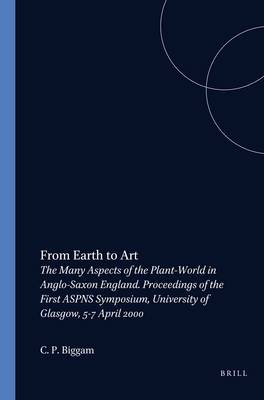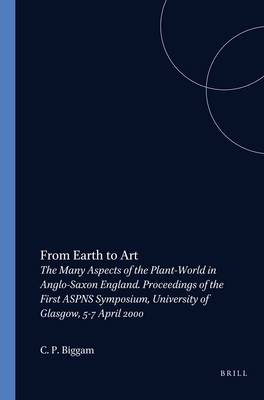
- Afhalen na 1 uur in een winkel met voorraad
- Gratis thuislevering in België vanaf € 30
- Ruim aanbod met 7 miljoen producten
- Afhalen na 1 uur in een winkel met voorraad
- Gratis thuislevering in België vanaf € 30
- Ruim aanbod met 7 miljoen producten
Zoeken
From Earth to Art
The Many Aspects of the Plant-World in Anglo-Saxon England. Proceedings of the First Aspns Symposium, University of Glasgow, 5-7 April 2000
€ 183,45
+ 183 punten
Omschrijving
From Earth to Art presents papers from the 'Early Medieval Plant Studies' symposium, a meeting designed to explore the various disciplines which could help to elucidate the plant-names of Anglo-Saxon England, many of which are not understood. The range of disciplines represented includes landscape history, place-name studies, botany, archaeology, art history, Old English literature, the history of food and of medicine, and linguistic approaches such as semantics and morphology. This collection represents a first experimental step in the work of the Anglo-Saxon Plant-Name Survey (ASPNS), a multidisciplinary research project based in the University of Glasgow. ASPNS is dedicated to collecting and reviewing, for the first time, the total multidisciplinary evidence for each plant-name, and establishing new or improved identifications. The results will have implications for various historical studies such as agriculture, pharmacology, nutrition, climate, dialect, and more. Included in the book is the first ASPNS word-study, concerned with the Old English word æspe (the ancestor of 'aspen'), and it is shown that this tree-name had a broader meaning than has hitherto been suspected. This book will be of interest to historians, botanists, archaeologists, linguists, geographers, gardeners, herbalists, conservationists and anyone interested in the crucial role of plants in history.
Specificaties
Betrokkenen
- Uitgeverij:
Inhoud
- Aantal bladzijden:
- 344
- Taal:
- Engels
- Reeks:
- Reeksnummer:
- nr. 148
Eigenschappen
- Productcode (EAN):
- 9789042008076
- Verschijningsdatum:
- 1/01/2003
- Uitvoering:
- Paperback
- Formaat:
- Trade paperback (VS)
- Afmetingen:
- 155 mm x 235 mm
- Gewicht:
- 534 g

Alleen bij Standaard Boekhandel
+ 183 punten op je klantenkaart van Standaard Boekhandel
Beoordelingen
We publiceren alleen reviews die voldoen aan de voorwaarden voor reviews. Bekijk onze voorwaarden voor reviews.










